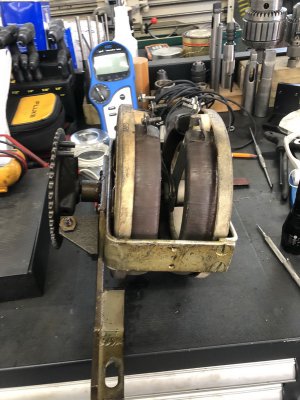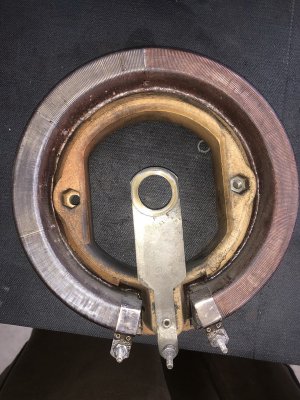- Joined
- Sep 3, 2011
- Messages
- 478
Is it that you think that DC motors are obsolete? There are still plenty of them being used in new designs.FWIW I disagree with the analogies above.
Mechanically the 10EE is one of the finest lathes ever built. For its era the drive was top shelf, but it is now obsolete and exceedingly difficult to repair.
...
It's just not the case the a motor/generator (MG) 10EE is "exceedingly difficult to repair". It's true that it you don't know anything about internal combustion engines, you will find your family car "exceedingly difficult to repair". Your car may have completely lost power because of a dirty air filter and if you don't have a clue how to troubleshoot it, you may have to rely on the nice man at the dealership that tells you that you need a valve job or a new engine. Similarly, if you've never seen a DC motor before, let alone a Ward-Leonard DC drive, you probably won't know where to begin. . . unless you take the time to do some good old fashioned 'learnen'. I know that you didn't ask for my help troubleshooting your last 10EE.
98% of the electrical problems with MG machines are worn brushes, bad exciters (on round-dials) or a bad hold-in resistor (on square-dials); all of these are easy and inexpensive to fix. The vast majority of the remaining problems are due to poor maintenance, including ham-fisted repairs by people who didn't know what they were doing. A problem like Will's is fairly rare.
Most machine tools that wind up in hands of a hobbiest (especially the ones with ways that are in nice condition) have something wrong with them. That doesn't mean that a particular make/model machine had some design defect. It shouldn't surprise anyone that 80 year old machines occasionally have problems. What should be impressive, is how many MG 10EEs are still running 80+ years later. If they were the kind of maintenance problem that you people seem to think they are, they would have all washed out of the system decades ago.
I don't think that's true. I believe that Monarch tried 10HP VFD machines with no back-gear and they didn't work out. Monarch's rebuilds do not automatically include a drive replacement, that's optional (link). Here's a retired guy that had two (that's right, TWO) 10EEs rebuilt by Monarch and they replaced the drives (at his request) with 7.5HP AC motors with back-gear units (link). If you buy a NEW 10EE from Monarch, it comes with a 7.5HP AC motor and 5:1 back-gear unit (link)....
I did a second one with an inverter duty 10 hp three phase and modern VFD last summer - no backgear. This machine should last many decades. If you send in a 10EE to be rebuilt by Monarch, they have done this exact upgrade.
...
What bothers me is the forum-wide "wisdom" that MG machines are unreliable, if not, beyond repair. The fact that keeping the DC motor and installing a DC drive isn't even discussed as an option speaks to a certain amount of myopia.
As to the Ohmite rheostat in question:
Here's one of Will's photos of the rheostat pair:

This is the bad rheostat:

The windings are open where the two coils at about 8:30 (O'clock) connect. I think that it's repairable. The problem in the past has been finding a flux and solder/braze that will stick to some of wire used. The bronze-colored windings on the right have effectively zero resistance. The three windings on the left have differing resistance per turn, apparently to tailor the response of the motor over different speed ranges.
The rheostat pair could certainly be replaced with off-the-shelf rheostats, but you would either need an elaborate mechanism or two knobs and an electrical interlock of some sort to keep you from inadvertently changing the armature and/or field voltages at the wrong time. Anyone interested in learning how these rheostats work with the drive can read my discussion here: link. The bottom line is that the rheostats are specially wound for two reasons: 1) to achieve single-knob control; and 2) to provide better motor control than a linear winding would.
"The highest form of ignorance is when you reject something you don't know anything about." - Wayne Dyer



